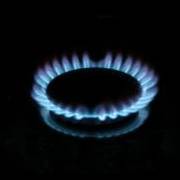
Energy price cuts - were you wrong to fix?
This week’s modest cut in energy prices has led many to question whether they were wrong to lock into a cheap fixed rate tariff to guard against future rises.
If you did, don’t be disheartened as the cuts announced this week are simply shaving down the prices and very far from reversing the mammoth previous hikes. The vast majority of people will still be substantially quids-in having fixed.
So let’s go through it.
Fixing is about surety, not just about prices
Even before looking at the rates, which show substantial savings from fixing for many, it’s worth remembering that a fix is an insurance policy against prices rises. It’s a peace of mind play.
We always state that whether it’s right for you is about your attitude to risk, rather than guessing games. Fixing is primarily for those who cannot risk prices rising.
So it should be considered that even if prices drops substantially, which they haven’t, if you fixed for the right reasons (see my August blog Is it worth fixing, if prices fall?) the risk of paying a little more is worth it against the damage of facing an unaffordable price hike.
It’s a bit like travel insurance, you buy it for protection, but you shouldn’t be annoyed with yourself if you don’t get ill on holiday. You bought it just in case, for peace of mind. So it’s done its job.
I must admit to being slightly surprised having seen news stories of people complaining that they fixed and now their price won’t drop.
Yet that’s the point of a fix. Your price didn’t rise during the huge hikes either.
Prices are still massively up
British Gas, EDF and SSE have cut either gas or electricity prices (not both) by up to 5%, in some cases by much less.
These are small cuts when you consider back in late summer and autumn energy firms raised BOTH gas and electricity prices by up to 19%.
As the table below shows, all providers who’ve announced so far (energy companies are like sheep, where one moves the others follow, so the others are likely to announce soon) are still vastly more expensive for both fuels than their pre-hike prices.
| Provider | Average hikes in late 2011 | 2012 cuts | Overall hike compared to summer 2011 | |||
|---|---|---|---|---|---|---|
| Gas | Electricity | Gas | Electricity | Gas | Electricity | |
| British Gas | 18% | 16% | 0% | 5% | 18% | 10.2% |
| EDF | 15.4% | 4.5% | 5% | 0% | 9.6% | 4.5% |
| Eon | 18.1% | 11.4% | N/A | N/A | 18.1% | 11.4% |
| Npower | 15.7% | 7.2% | N/A | N/A | 15.7% | 7.2% |
| Scottish Power | 19% | 10% | N/A | N/A | 19% | 10% |
| SSE | 18% | 11% | 3.8% | 0% | 13.5% | 11% |
If you got a cheap fix, prices would need to drop hugely to make it the worse option
The chart above shows the difference in typical prices from the three major suppliers to have cut prices compared to pre-hike costs last summer.
Provided you got a cheap fix the right way, by doing a comparison to find the right one, prices would need to seriously dive to make fixing on the cheap more expensive than a variable tariff bought last summer as prices are still much higher, even after this round of cuts.
You’ve been saving a while with a cheap fix
The previous round of price hikes have been in place for up to five months, so anyone who took a cheap fix before that round has been saving big time over the past few months.
Not only that, but with the exception of British Gas, whose price cuts thankfully have immediate effect, the others haven’t hit yet. EDF is February, SSE bizarrely is late March. So there’s no gain over the expensive winter months.
What’s more, if you took a cheap fix when we first highlighted the option before the price hikes hit, many would have saved £150 over the pre-hike prices, which then jumped by 10-20%.
And given this week’s cuts shave about £20 or £30 off an annual energy bill, many will still have saved.
Even if you fixed since last autumn’s price rises, provided you were moving to the cheapest deals, unless in rare circumstance you chose to move to a fix where you paid more (or your comparison showed fixing saved you £30 or less) you’re still better off compared to the post cut prices.
Of course if you choose to compare this not with what you were paying but to the very, very cheapest online deals that you could’ve moved to, which undercut the cheapest fixes, you would’ve had lower bills. Yet that is the cost of choosing the guarantee you still have that your rate won’t rise.
What will happen to prices, should you fix now?
For many on standard tariffs it is still possible to make substantial savings and lock-in to a fixed rate.
The decision to fix should be based on three factors:
- What is happening to prices: Currently, they’re creeping down, but wholesale prices are down further so there is room for more cuts. Yet that’s far from guaranteed, energy is a market and moves rapidly, so prices could still rise. So there’s no surety.
- Can I afford price rises? This is still by far the most important question. If you cannot afford the risk of prices going up – perhaps as then you’d simply not be able to make ends meet then protecting yourself from that is more important than guaranteeing you gain from any future price drops. This is all about your attitude.
- How cheap are fixes? Last summer, there were some uber-cheap deals around, undercutting even the cheapest variable rates. That isn’t quite the case now though those on standard tariffs can still save £100s by switching and fixing (see the Cheapest energy deals guide).










Comment via Facebook login
This is an open discussion; anyone can post. Please report any spam, illegal, offensive, racist, libellous posts (inc username) to fbteam@moneysavingexpert.com